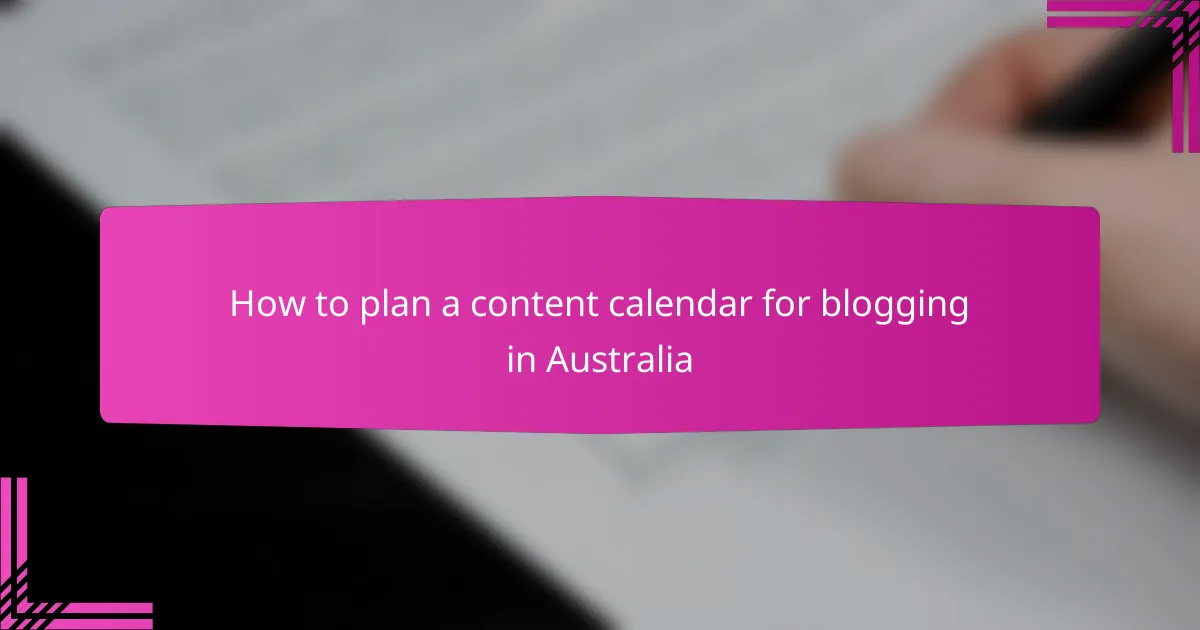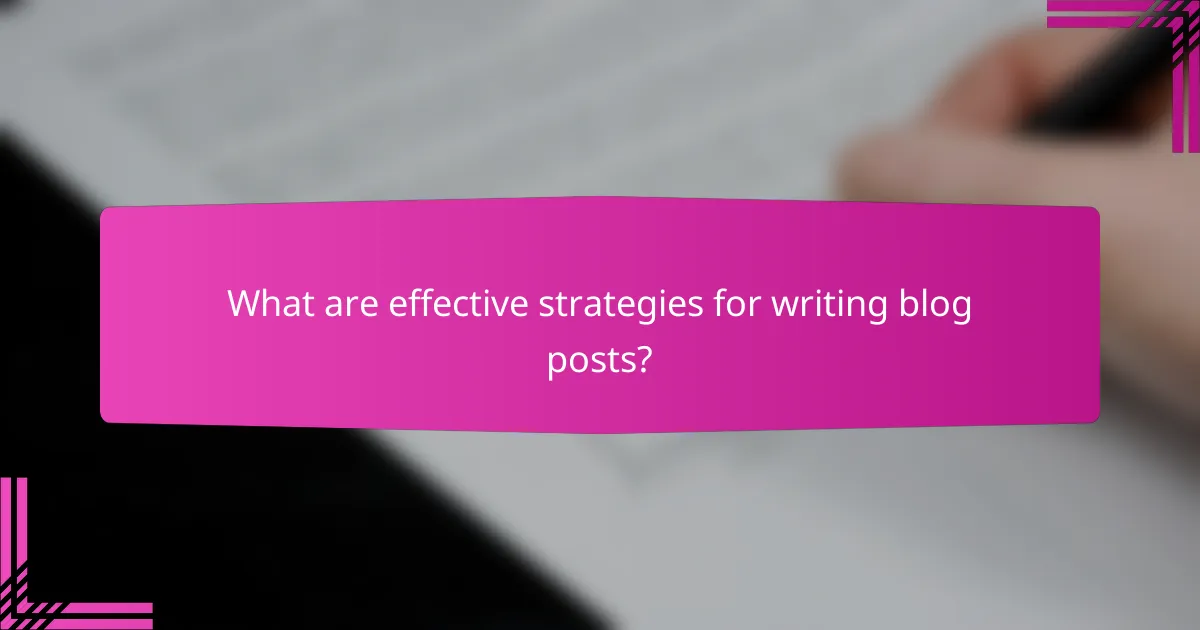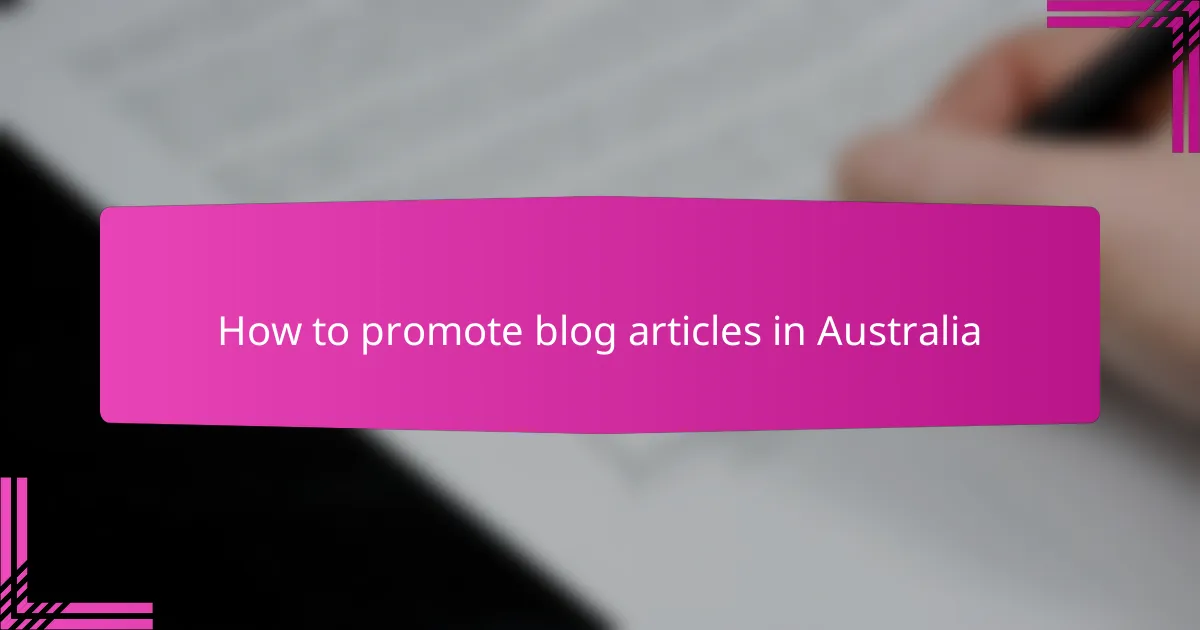Creating a successful blog requires careful planning, engaging writing, and effective promotion. By developing a content calendar, you can organize your topics and schedule to resonate with your audience while ensuring consistency. Writing compelling posts that incorporate SEO and storytelling will enhance your visibility, and promoting your articles through social media and other channels will help you reach a wider audience.

How to plan a content calendar for blogging in Australia
Planning a content calendar for blogging in Australia involves organizing your topics, schedule, and promotional strategies to effectively engage your audience. A well-structured calendar helps maintain consistency, aligns with audience interests, and maximizes the impact of your posts.
Identify target audience and topics
Understanding your target audience is crucial for effective blogging. Research demographics, interests, and pain points to tailor your content accordingly. Consider using surveys or social media insights to gather data on what topics resonate with your readers.
Once you identify your audience, brainstorm relevant topics that address their needs. Create a list of potential blog post ideas, ensuring they align with your brand and the interests of your audience. This will serve as a foundation for your content calendar.
Set publishing frequency
Establishing a consistent publishing frequency is essential for audience retention and engagement. Aim for a realistic schedule that you can maintain, whether it’s weekly, bi-weekly, or monthly. Regular posting helps build anticipation among your readers.
Consider the complexity of your topics and the time required for research and writing. Aiming for one to four posts per month is common for many bloggers, but adjust based on your capacity and audience feedback.
Use tools like Trello or Asana
Utilizing project management tools like Trello or Asana can streamline your content planning process. These platforms allow you to create boards or lists for different stages of your content, from brainstorming to publishing.
Set up a calendar view to visualize your publishing schedule and deadlines. This helps keep your content organized and ensures you stay on track with your planned topics and frequency.
Incorporate seasonal events
Incorporating seasonal events into your content calendar can enhance relevance and engagement. Identify key holidays, local events, or industry-specific dates that align with your blog’s themes. For instance, creating content around Australia Day or the Melbourne Cup can attract more readers.
Plan your posts in advance to coincide with these events, allowing you to capitalize on trending topics. This strategy not only boosts visibility but also shows your audience that you are in tune with current happenings.

What are effective strategies for writing blog posts?
Effective strategies for writing blog posts involve crafting compelling content that resonates with your audience while adhering to best practices for visibility and engagement. Focusing on clear communication, SEO, storytelling, and multimedia can significantly enhance the impact of your posts.
Use clear and engaging headlines
Clear and engaging headlines are crucial as they are often the first impression readers have of your content. A strong headline should be concise, informative, and evoke curiosity. Aim for headlines that are around 60 characters to ensure they display well in search results.
Consider using numbers, questions, or strong adjectives to make your headlines more compelling. For example, “10 Tips for Effective Blogging” or “How to Boost Your Blog Traffic Today” can attract more clicks.
Incorporate SEO best practices
Incorporating SEO best practices is essential for increasing your blog’s visibility in search engines. Start by conducting keyword research to identify terms your target audience is searching for, and naturally integrate these keywords into your content, headings, and meta descriptions.
Additionally, focus on optimizing your blog’s loading speed and ensuring it is mobile-friendly. Use tools like Google Analytics to track performance and adjust your strategy based on what works best for your audience.
Utilize storytelling techniques
Utilizing storytelling techniques can make your blog posts more relatable and memorable. Start with a hook that draws readers in, and structure your content with a clear beginning, middle, and end. Personal anecdotes or case studies can enhance your narrative and create a connection with your audience.
Incorporate emotional elements and vivid descriptions to engage readers further. For instance, instead of stating facts, share a personal experience that illustrates your point, making the content more impactful.
Include visuals and multimedia
Including visuals and multimedia can significantly enhance the reader’s experience and comprehension. Use images, infographics, and videos to break up text and illustrate complex ideas. Aim for high-quality visuals that are relevant to your content.
Consider using tools like Canva for creating custom graphics or embedding videos from platforms like YouTube to enrich your posts. Remember to optimize images for faster loading times and ensure they are properly attributed if not your own.

How to promote blog articles in Australia
Promoting blog articles in Australia involves utilizing various strategies to reach your target audience effectively. Key methods include leveraging social media, engaging through email marketing, collaborating with influencers, and utilizing paid advertising options.
Leverage social media platforms
Social media platforms are essential for promoting blog articles, as they allow for direct interaction with your audience. Focus on platforms popular in Australia, such as Facebook, Instagram, and LinkedIn, to share your content and engage users.
Consider creating visually appealing posts that highlight key points from your articles. Use relevant hashtags to increase visibility and encourage sharing among followers, which can amplify your reach significantly.
Engage with email marketing campaigns
Email marketing remains a powerful tool for promoting blog articles. Build a subscriber list by offering valuable content or incentives, then send regular newsletters featuring your latest posts. Personalization can enhance engagement rates.
Include clear calls to action in your emails, directing readers to your blog. Segment your audience based on interests to tailor content, ensuring higher open and click-through rates.
Collaborate with influencers
Partnering with influencers can expand your blog’s reach and credibility. Identify influencers in your niche who resonate with your target audience and propose mutually beneficial collaborations, such as guest posts or social media takeovers.
When selecting influencers, consider their engagement rates and audience demographics to ensure alignment with your blog’s goals. This strategy can lead to increased traffic and new followers.
Utilize paid advertising options
Paid advertising can effectively promote blog articles, especially through platforms like Google Ads and Facebook Ads. Set a budget and target specific demographics to maximize your ad spend.
Experiment with different ad formats, such as sponsored posts or display ads, to determine what resonates best with your audience. Monitor performance metrics to adjust your strategy and improve results over time.

What are the key criteria for selecting blog topics?
Key criteria for selecting blog topics include relevance to your audience, alignment with current trends, and the potential to fill gaps in existing content. Focusing on these aspects ensures that your blog remains engaging and valuable to readers.
Analyze keyword trends
Analyzing keyword trends helps identify what potential readers are searching for online. Use tools like Google Trends or SEMrush to discover popular keywords related to your niche. Aim for keywords that have a decent search volume but are not overly competitive.
Consider focusing on long-tail keywords, which are more specific phrases that often yield higher conversion rates. For example, instead of targeting “fitness,” you might opt for “home workout routines for beginners.”
Consider audience pain points
Understanding your audience’s pain points is crucial for selecting relevant blog topics. Conduct surveys, read comments, and engage on social media to uncover the challenges your readers face. Addressing these issues in your content can significantly increase engagement.
For instance, if your audience struggles with time management, consider writing posts that offer practical tips on productivity or tools that can help them organize their schedules effectively.
Evaluate competitor content
Evaluating competitor content allows you to identify gaps and opportunities in your niche. Analyze the topics your competitors cover, the engagement they receive, and the formats they use. This can provide insights into what resonates with the audience.
Look for areas where competitors may be lacking depth or failing to address specific questions. For example, if a competitor has a post on “social media marketing,” you could create a more comprehensive guide that includes case studies and actionable strategies.

How to measure the success of your blog?
Measuring the success of your blog involves analyzing various metrics that reflect its performance and audience engagement. Key indicators include website traffic, social media shares, and reader interactions, which provide insights into what resonates with your audience.
Track website traffic and engagement
To effectively track website traffic, utilize tools like Google Analytics to monitor the number of visitors, page views, and average session duration. These metrics help you understand how well your content attracts and retains readers.
Engagement metrics, such as bounce rate and time spent on page, are equally important. A low bounce rate and longer time on page suggest that your content is engaging and relevant to your audience. Aim for a bounce rate below 50% for optimal engagement.
Monitor social media shares
Social media shares are a direct indicator of how well your content resonates with readers. Use social media analytics tools to track the number of shares, likes, and comments your posts receive across platforms like Facebook, Twitter, and LinkedIn.
Consider setting a benchmark for shares based on your previous posts to gauge performance. Aiming for a steady increase in shares over time can indicate growing interest and reach. Focus on creating shareable content, such as infographics and compelling headlines, to boost these metrics.



